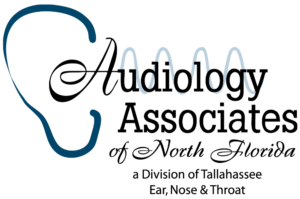Pediatric Hearing Testing
Research has shown that the most important years for language development occur between birth and two years of age. When hearing loss goes undiagnosed, whether due to persistent ear fluid or permanent nerve loss, children will miss the information they need to develop good language skills. That is why it is so important that caregivers be aware of speech, language, and hearing milestones, and seek professional advice when they have concerns.
Pediatric Hearing Evaluations (6 months – 5 years)
Hearing evaluations in young children help us determine the presence, type, and severity of hearing loss. Parents are often surprised at the extent of information that can be obtained on young children. Prior to the exam, your audiologist will discuss with you the concerns you have regarding your child’s hearing, as well as obtain any medical history that might be pertinent to your concerns. The type of testing performed with your child depends on their age and developmental level.
Visual Reinforcement Audiometry (approximately six months to three years of age) – This test is performed by having your child sit on your lap in a sound treated booth. Speech sounds and tones are presented through speakers in the sound booth and lighted toys are used to reward your child when they look for the source of the sound. By decreasing the intensity of the sound, we determine the lowest level at which your child will respond to different sounds that are important for speech.
Play Audiometry (approximately three years to five years) – This test involves having your child sit in a sound treated booth. They are taught to listen for sound and to throw a block on the floor, or perform some other play activity, every time a sound is heard. They may also be asked to point to pictures on a board, or repeat back words, to determine the softest level at which they can understand speech.
Other brief tests are often performed during the same visit to determine the presence of middle ear fluid (tympanometry), which is common in young children, as well as automated tests that evaluate the response of the inner ear (otoacoustic emissions).
Auditory Brainstem Response (ABR) for Pediatrics
An ABR uses a computer to evaluate the hearing nerve from the inner ear to the brainstem. Electrodes are placed on your child’s head and insert earbuds placed in their ears which produce clicking sounds. The response of the hearing nerve is monitored to determine the softest level at which the nerve is able to respond to the clicking sound. By monitoring the waveforms produced by the hearing nerve, we can closely predict the degree of hearing loss at certain pitches. This test is often used during infancy when the baby did not pass the Universal Infant Hearing Screening conducted in the hospital after delivery. It is also used for older children when standard types of hearing tests do not yield conclusive results. It is necessary for your child to be asleep during the test.
Natural Sleep
Natural sleep is the preferred method for children under one year. It is necessary that your child be deprived of sleep prior to arriving at the appointment so that they are more likely to nap in the office. Please try not to let your child fall asleep until the audiologist has called you back to the exam room. It is also suggested that your child arrive to the appointment hungry. Just before the exam begins, you can feed your child to encourage sleep.
